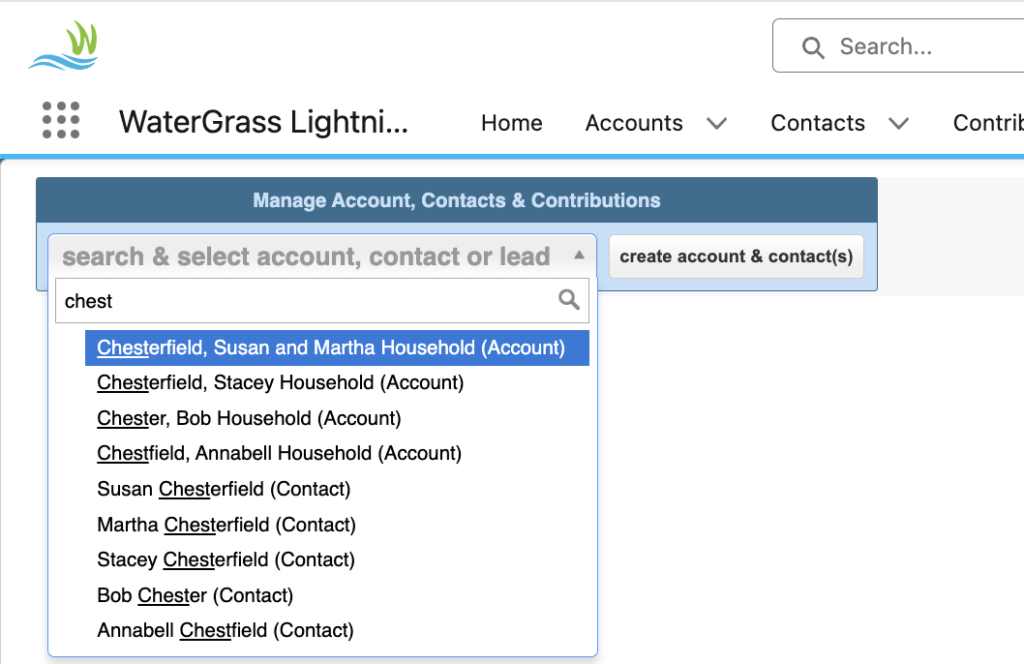5 Habits to Keep Your Data Clean
Databases can be behemoths to manage, and inconsistent data and duplicates can make this powerful tool into an even more powerful monster. To tackle any beast, one needs training, a good team and a solid plan. Here are five ways you can work to tame your “databeast” and assure that it never gets out of control.
Implement Validation Rules
You’ve probably noticed some discrepancies in the data across your platform. This can make it tough to run reports and monitor trends. Data validation rules can help. These rules are checks that are built into your system to enforce data consistency automatically.
Examples include:
- Making necessary fields required
- Using field formats that keep your data consistent (i.e. checkboxes, radio buttons and drop down lists)
At WaterGrass, we have a system called the EACC (Entering Account Contacts and Contributions), which is a series of screen flows and prompts for data entry. This system is peppered with data validation rules. As a bonus, it also helps prevent duplicate contacts and accounts, and prevents orphaned contacts and contributions.
By creating rules and systems like this, you can prevent incorrect or incomplete data from even entering your database.
Establish Quality Standards
Even with validation rules and a system like WaterGrass’ EACC, you are still likely to come across a few inconsistencies with manual data entry. This is especially true if you have many hands in the database.
Bring your database team to the table and discuss what standards need to be established to make everyone’s work a bit easier. Find the holes. Then fill your holes with training, written protocols, or plan to develop a new data validation rule in the system. Establish naming conventions and a database glossary if necessary. This will not only help to ensure that your staff is all on the same page, but will also make your reports easier to pull in the future. And it will keep your system updated and ever-evolving to do the work for you.
Manage Duplicates
Imagine sending a person the same piece of mail twice. Telling a person who just renewed that their membership that it is about to expire. Or sending out three EOY tax letters to one person, all with different amounts. No one wants that.
In WaterGrass, the database will alert users when they are viewing an Account or Contact which may have a duplicate. Then the user who is accessing that record can take care of it right then and there.
Databases may also have duplicate reports that can help users look at potential dupes across the database all at once. At WaterGrass, we have half a dozen duplicate record reports, housed in the WG Data Health Folder. To keep an eye on these reports and handle dupes in a bite-size amount, you can schedule these reports to run every week.
If your database has very few duplicates, that means it’s always ready to go for your next campaign. Yay! And THIS keeps your funds and activities flowing into your system.
Schedule Weekly Clean Ups
Whether you’re managing dupes, filling in missing fields, fixing historic data to match a new data entry standard or something else, it can be hard to find the time unless you schedule it. Think about the bottlenecks you hit when you’re at a deadline. Can you handle these issues as you go?
We recommend scheduling data health reports, or reminders to arrive at your inbox where you actually have time to tackle them. In WaterGrass you can subscribe to data health reports or other custom reports and they will be sent to you on the day you prefer. Get to what you can get to during your scheduled time, and tackle the remaining records in the email that arrives next week. If you’re managing the books for your organization, this bit by bit approach could be key to closing each month on time.

Create Multiple User Permissions
Most databases will have multiple levels of access for users. Does the person who enters volunteer hours in the database need to have access to all of the financial records as well?
Setting these permissions can help safeguard against edits and deletions and can keep sensitive information accessible only to certain staff. In WaterGrass, these permissions can be set by any admin, or WaterGrass team member. Just ask us if you need some assistance.
P.S. It’s also a good idea to regularly back up your data. You can’t keep it clean if it’s gone!
A good database will help you visualize trends, connect with your constituents, collaborate with your staff and manage your organization. But a database is only as good as the data that’s in it.
We hope these five habits will help you tame your wild data! If you need more guidance or a deeper dive into streamlining your WaterGrass database to work for you, please reach out to us at support@watergrass.org.



